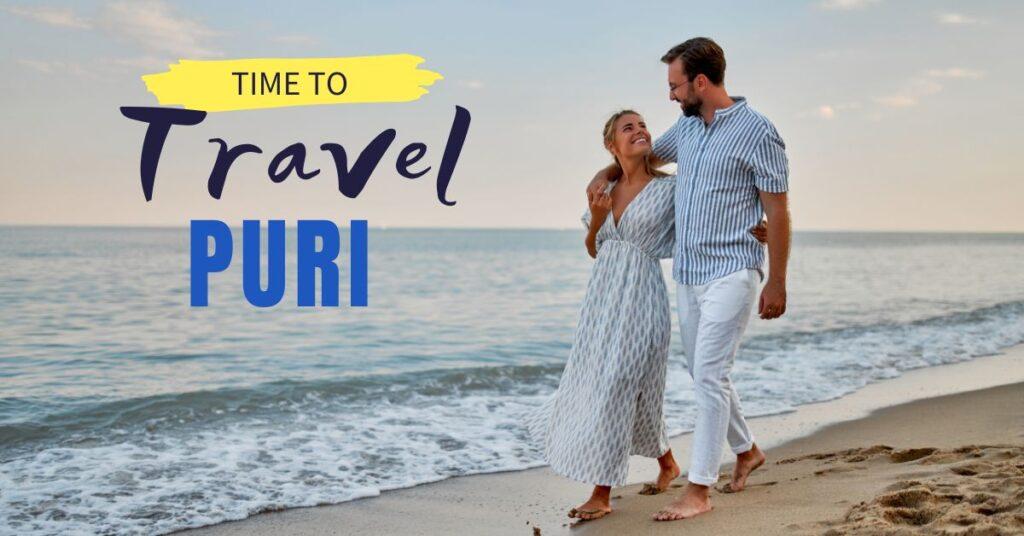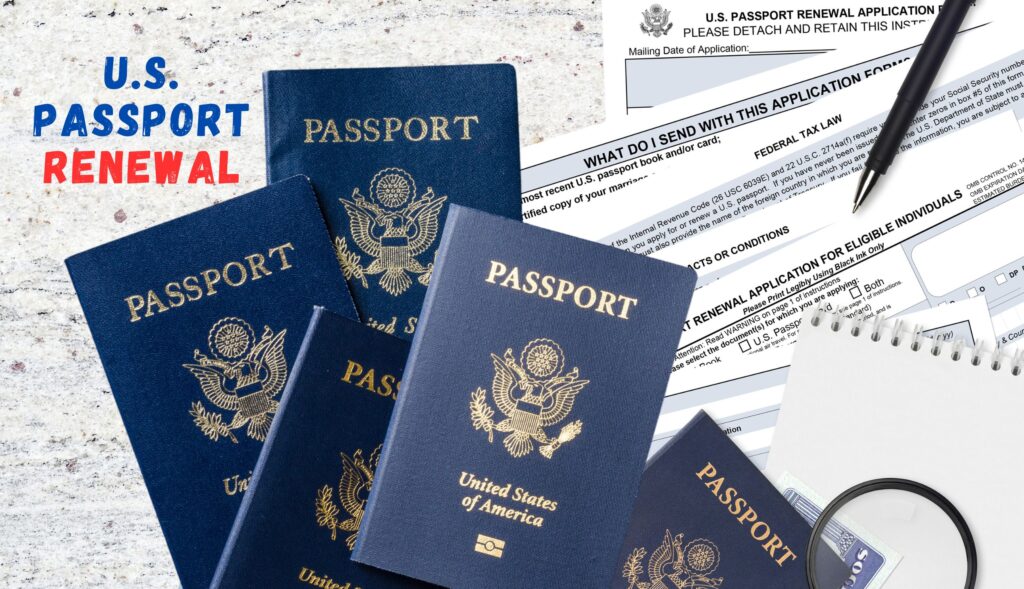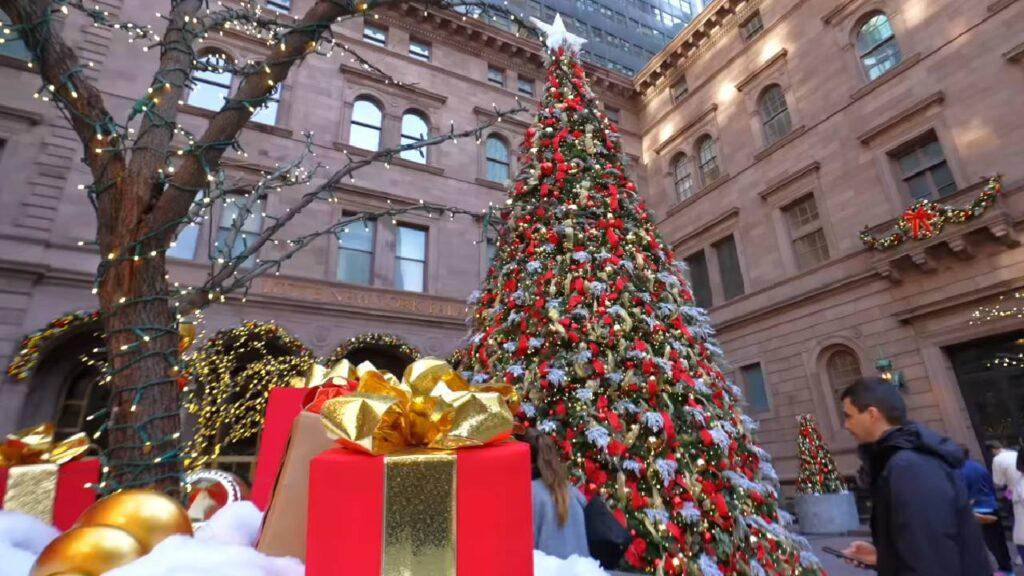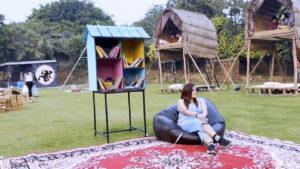Find best of Luxembourg City – including 11 hand-picked hotspots and must-do activities that reveal the true spirit of this beautiful capital.
Luxembourg, a charming blend of old-world beauty and modern sophistication, is a destination that often surprises travelers with its rich culture, historical architecture, and breathtaking landscapes. Despite being one of Europe’s smallest countries, Luxembourg is packed with authentic experiences, from fortified castles and panoramic viewpoints to vibrant art scenes and gourmet delights.
Luxembourg – Cultural and Economic Gem in Western Europe
Luxembourg sits proudly at the crossroads of Belgium, France, and Germany. This landlocked nation packs a powerful punch with its rich history, stunning landscapes, and global influence. Its capital, Luxembourg City, stands out for its dramatic geography—perched on towering cliffs and cut by deep gorges, the city blends old-world charm with sleek, modern architecture. The contrast between the historic Old Town and the vibrant business districts highlights Luxembourg’s unique character.
As one of the world’s wealthiest countries, Luxembourg leads in finance and politics, but it doesn’t stop there. The country celebrates its cultural diversity with passion. Locals speak Luxembourgish, French, and German fluently, while a large expatriate population adds even more global flair. Wander through medieval castles, contemporary art galleries, or relax in cozy cafés serving international cuisine—Luxembourg invites you to experience it all.
UNESCO-listed sites, lush forests, and centuries-old traditions anchor the nation’s identity. Whether the countryside or navigating the cobblestone streets of the city, Luxembourg captures your attention with every step.
How to Get to Luxembourg – Gateway to the Heart of Europe
Traveling to Luxembourg is simple and seamless, thanks to its efficient and well-integrated transportation network. Flying in from another country or arriving by train from nearby cities, Luxembourg makes it easy to reach its charming capital and beyond.
By Air – Flying into Luxembourg Findel Airport (LUX)
Luxembourg Findel Airport (LUX) welcomes international travelers just 6 kilometers northeast of Luxembourg City. As the country’s only international airport, Findel handles a steady flow of flights from major European hubs. Airlines like Luxair, Lufthansa, KLM, British Airways, and easyJet operate frequent connections to and from cities such as London, Paris, Amsterdam, Frankfurt, and Milan.
Upon arrival, reaching the city center takes less than 20 minutes by taxi or bus. Public buses, including lines 16 and 29, run regularly from the airport to central locations. Since public transport in Luxembourg is entirely free, you can ride without worrying about tickets or costs.
By Train – Connecting from Neighboring Countries
If you’re traveling from nearby countries like France, Germany, or Belgium, the train offers a scenic and convenient route into Luxembourg. High-speed and regional rail services connect Luxembourg City to key European cities:
- From Paris: Hop on a TGV high-speed train at Gare de l’Est, and you’ll arrive in Luxembourg City in just over two hours. These trains offer comfort, speed, and stunning countryside views along the way.
- From Germany: Regional trains from cities like Trier, Koblenz, and Frankfurt provide direct connections to Luxembourg. You can enjoy picturesque river valleys and rolling hills as you ride.
- From Belgium: Regular services from Brussels, Arlon, and Liège link travelers directly to Luxembourg. The journey from Brussels typically takes around three hours.
All trains arrive at Luxembourg Central Station, located just south of the city center. From there, you can easily walk or hop on a tram or bus to visit the rest of the capital.
Getting Around – Enjoy Free Public Transportation
One of Luxembourg’s most traveler-friendly features is its nationwide free public transport system. Since March 2020, buses, trams, and trains have been completely free for residents and visitors alike. You can hop on any mode of public transit without a ticket, whether you’re commuting across town or heading into the countryside.
Trams glide through the city’s modern business district, buses reach even the most remote villages, and trains connect all corners of the country with speed and ease. This unique initiative makes Luxembourg not only accessible, but also incredibly budget-friendly.
Where to Stay in Luxembourg City – Perfect Neighborhood for Every Traveler
Luxembourg City welcomes travelers with a wide variety of accommodations, from luxurious five-star hotels to charming guesthouses and budget-friendly stays. Each district of the city offers a unique atmosphere, so where you choose to stay can shape your entire experience. Drawn to medieval history, modern culture, or riverside charm, Luxembourg City has the perfect place for you to call home during your visit.
1. Ville Haute – Stay Amid History and Elegance
If want to soak up the rich heritage of Luxembourg, Ville Haute (Upper Town) places you right at the heart of it all. This historic center sits atop dramatic cliffs and showcases medieval streets, lively squares, and architectural landmarks. When you stay here, you step directly into the city’s soul.
Boutique hotels such as Hotel Le Place d’Armes or Hotel Simoncini blend artistic flair with classic elegance, offering stylish rooms just steps from sites like the Grand Ducal Palace, Notre-Dame Cathedral, and Place Guillaume II. For those seeking luxury, Hotel Parc Beaux-Arts offers an upscale experience in a building that reflects the charm of Old Europe.
In Ville Haute, you’re surrounded by museums, restaurants, and quaint cafés, making it ideal for travelers who want to walk out of their hotel and right into history.
2. Grund – Riverside Romance and Peaceful Stays
For a quieter and more romantic escape, the Grund district provides a fairy-tale setting at the bottom of the Alzette River gorge. This area charms visitors with its cobblestone streets, ivy-covered walls, and stunning views of the ancient city ramparts above.
Stay in cozy guesthouses like Hotel Parc Belle-Vue or Auberge Gaglioti, and enjoy peaceful walks along the riverbanks or through the picturesque Chemin de la Corniche, often called “Europe’s most beautiful balcony.” The Grund’s charming vibe, combined with easy access to central Luxembourg via elevator or footbridge, makes it a favorite for couples, artists, and nature-loving travelers.
3. Kirchberg – Modern Comfort in a Cultural Hub
Traveling for business or want to immerse yourself in contemporary architecture and art, Kirchberg offers a sleek and modern contrast to the Old Town. Located northeast of the city center, Kirchberg is home to major European institutions, financial headquarters, and cultural highlights such as the Philharmonie Luxembourg, the Grand Duke Jean Museum of Modern Art (Mudam), and the European Court of Justice.
International hotel brands like Melia Luxembourg, Novotel Suites, and Mama Shelter offer stylish, comfortable rooms with modern amenities. The district’s clean lines, green parks, and tram connections to the city center make it perfect for business travelers, art enthusiasts, and anyone who enjoys upscale, contemporary surroundings.
11 Authentic Hotspots of Luxembourg & Things to Do
Here are curated list of 11 must-visit hotspots and activities that truly showcase the heart and soul of Luxembourg:
- Fort Thüngen & Park Drai Echelen
- Chemin de la Corniche
- Modern Art Museum
- Grund
- Pont Adolphe
- Oberstadt
- Philharmonie
- Panoramic elevator
- Casemates
- Foodie & cocktail hotspots
- Luxembourg sightseeing tours
1. Fort Thüngen & Park Drai Echelen
Fort Thüngen, often referred to as the “Three Acorns” due to the distinctive shape of its turrets, is an iconic historical site in Luxembourg. Situated in the scenic Park Drai Echelen, this fortification offers visitors a step back in time to visit Luxembourg’s military past. It was built in the 18th century as part of the city’s defensive system, reflecting Luxembourg’s strategic importance in Europe. Today, the fort stands as a testament to the city’s rich history, with well-preserved ramparts, historic cannons, and panoramic views of the surrounding cit
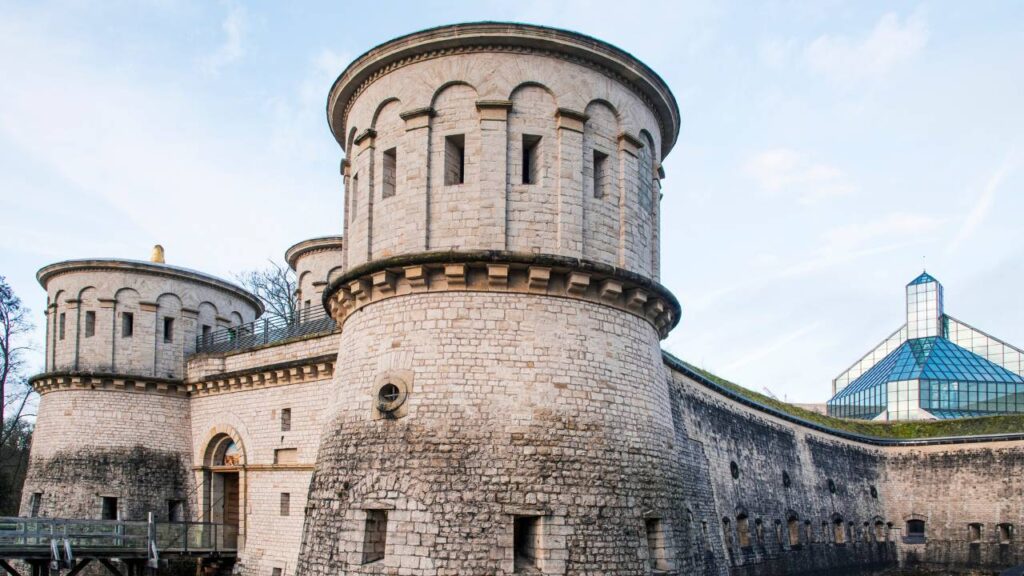
Things to Do
- Visit the Park: Take a leisurely stroll through Park Drai Echelen, where you can enjoy lush greenery, beautiful landscaping, and breathtaking views of Luxembourg City.
- Photography and Scenic Views: Capture stunning photos of the fort’s architecture and panoramic vistas of the Alzette River and the old town.
- Learn About History: Visit the museum housed within the fort, which offers exhibits on Luxembourg’s military history, the fort’s construction, and its role during various European conflicts.
- Hike the Trails: There are several walking trails in the park that lead you to historic sites and viewpoints, allowing you to enhance the area at your own pace.
2. Chemin de la Corniche
Known as the “most beautiful balcony of Europe,” Chemin de la Corniche is one of Luxembourg’s most scenic spots. This walking path follows the old city walls, offering spectacular views of the Alzette River, the Grund district, and the city’s ancient fortifications. The path is lined with charming, centuries-old houses, gardens, and benches perfect for taking in the scenery. Whether you’re a history enthusiast or a photography lover, this spot is an absolute must-see.

Things to Do
- Walk Along the Path: Take a relaxed walk along the path to enjoy panoramic views of the city and the river below.
- Visit the Old City Walls: Marvel at the ancient fortifications that once protected the city. Stop to experience the historic landmarks that line the route.
- Take Photos: With its breathtaking views and picturesque surroundings, Chemin de la Corniche is a photographer’s paradise. Capture the sweeping views of Luxembourg City and the Alzette River.
- Relax on Benches: There are plenty of benches where you can sit, relax, and enjoy the peaceful atmosphere while gazing at the city’s historic beauty.
3. Modern Art Museum (Mudam)
Located in the vibrant Kirchberg district, the Mudam (Musée d’Art Moderne Grand-Duc Jean) is Luxembourg’s premier modern art museum. Designed by the world-renowned architect I.M. Pei, the museum itself is a work of art. Inside, the museum houses an impressive collection of contemporary works, including paintings, sculptures, and multimedia installations by both local and international artists. Mudam is a perfect destination for art lovers, offering a unique blend of art and architecture in a stunning modern setting.
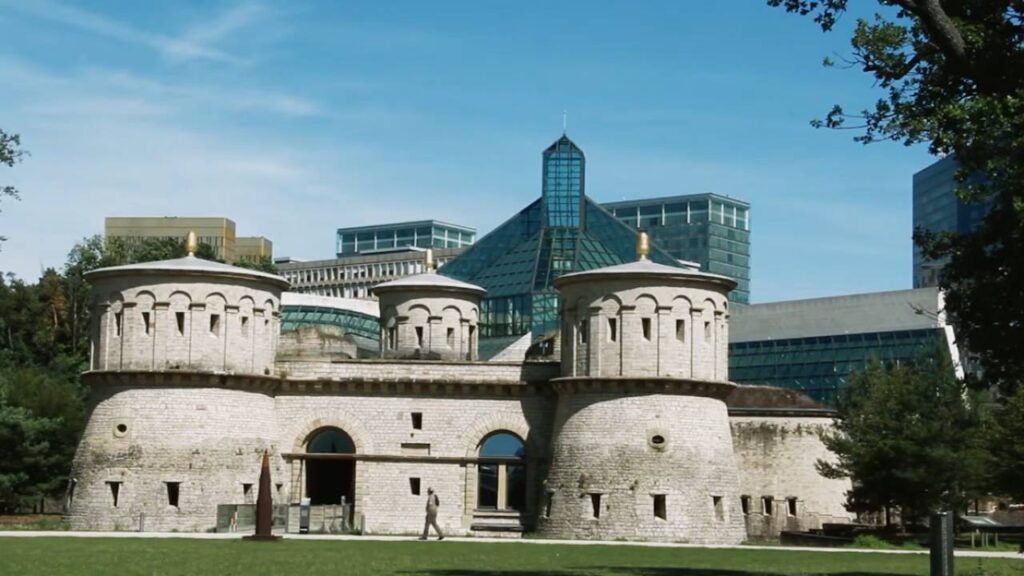
Things to Do
- Visit Contemporary Exhibitions: Visit the museum’s rotating exhibitions featuring works by emerging and established contemporary artists from Luxembourg and around the world.
- Engage with Interactive Installations: Many of the museum’s exhibits are interactive, allowing you to engage with the art in new and exciting ways.
- Relax at the Café: Take a break at the museum’s café, where you can enjoy coffee or a light meal while surrounded by artistic inspiration.
- Stroll in the Gardens: Mudam’s gardens offer a serene spot for reflection after exploring the museum. The outdoor space is ideal for enjoying Luxembourg’s beautiful weather and architecture.
4. Grund
The Grund district is undoubtedly one of the most picturesque neighborhoods in Luxembourg City. Nestled below the cliffs and surrounded by the Alzette River, Grund boasts charming cobblestone streets, pastel-colored houses, and a peaceful ambiance. With its historic architecture, cozy cafés, and riverside walks, this district offers a peaceful retreat from the hustle and bustle of the city. It’s a wonderful place to visit if you enjoy history, architecture, or simply relaxing by the river
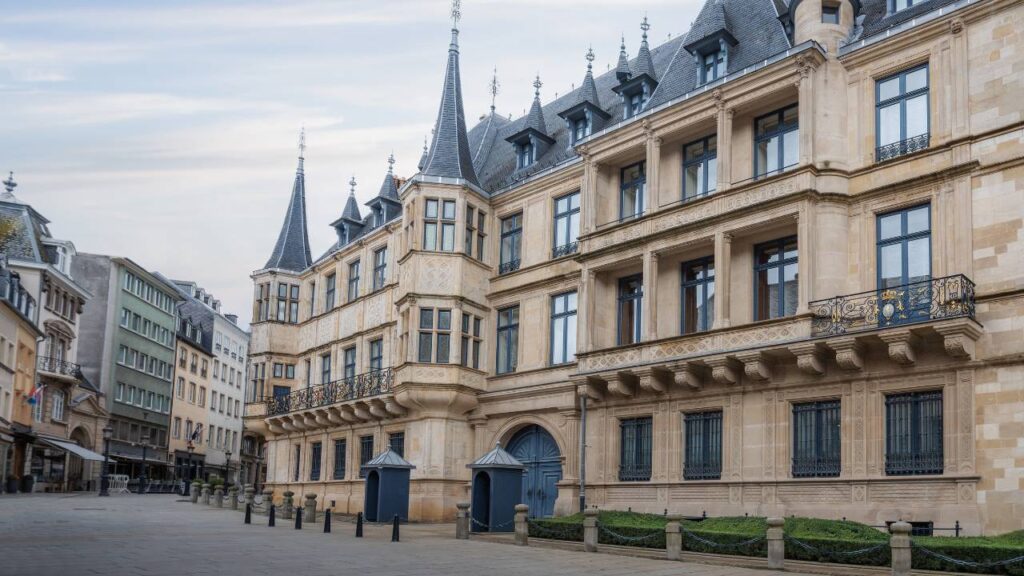
Things to Do
- Wander Through Cobblestone Streets: Take a leisurely walk through the quaint streets of Grund, where you’ll encounter beautiful, centuries-old architecture and charming houses.
- Visit the Local Breweries: Stop by one of the district’s family-owned breweries or pubs to taste traditional Luxembourgish beers and enjoy the local atmosphere.
- Dine at Local Restaurants: Discover a range of cozy, family-run restaurants offering traditional Luxembourgish dishes, including hearty stews and fresh seafood.
- Enjoy the Grund Churches: Visit the historical churches in the area, such as the Church of St. Michael, which offers a peaceful and spiritual experience.
5. Pont Adolphe
Pont Adolphe, a stone arch bridge built in the early 20th century, is one of Luxembourg City’s most iconic landmarks. Spanning the Pétrusse Valley, it connects the Ville Haute district with the Gare area. This architectural marvel offers spectacular views of the valley below and the city skyline. The bridge also serves as a functional pedestrian and cycle bridge, making it an essential part of the city’s infrastructure while also offering stunning vistas for visitor
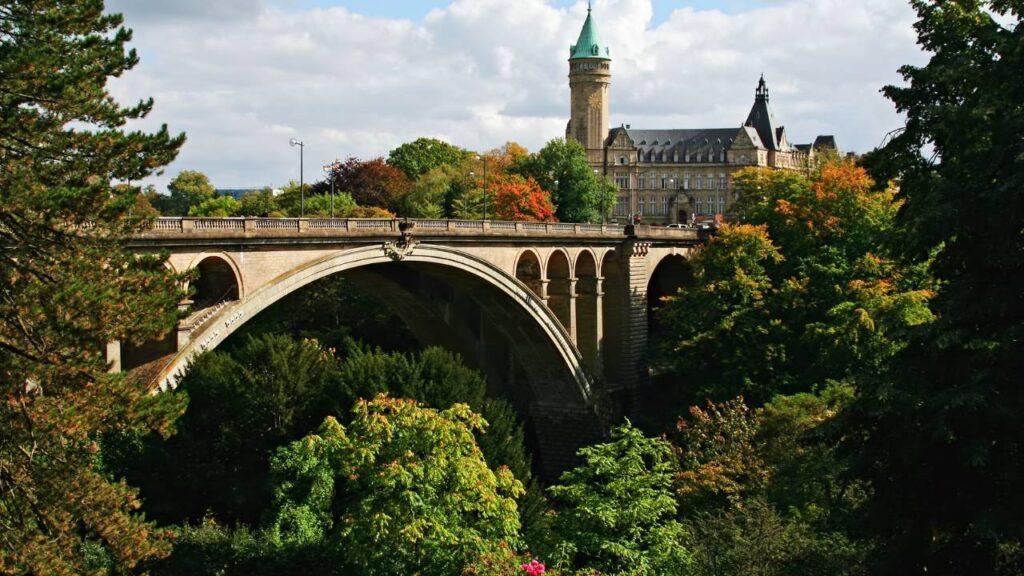
Things to Do
- Walk Across the Bridge: Take a leisurely walk across Pont Adolphe, enjoying the sweeping views of the valley, the city’s rooftops, and the surrounding greenery.
- Photograph the Bridge: The bridge’s majestic stone arch makes it a great subject for photos, especially from below where you can capture its full grandeur.
- Cycle Across the Bridge: If you prefer a more active experience, take a bike ride across the bridge for an even more scenic experience of the Pétrusse Valley and surrounding areas.
6. Oberstadt (Upper Town)
Oberstadt is the historic heart of Luxembourg City, home to many of the city’s most important landmarks. This district includes the Grand Ducal Palace, the Notre-Dame Cathedral, and the Place Guillaume II. Oberstadt is a lively area filled with charming streets, elegant boutiques, and bustling squares. It’s the perfect place to immerse yourself in Luxembourg’s culture, history, and politics.
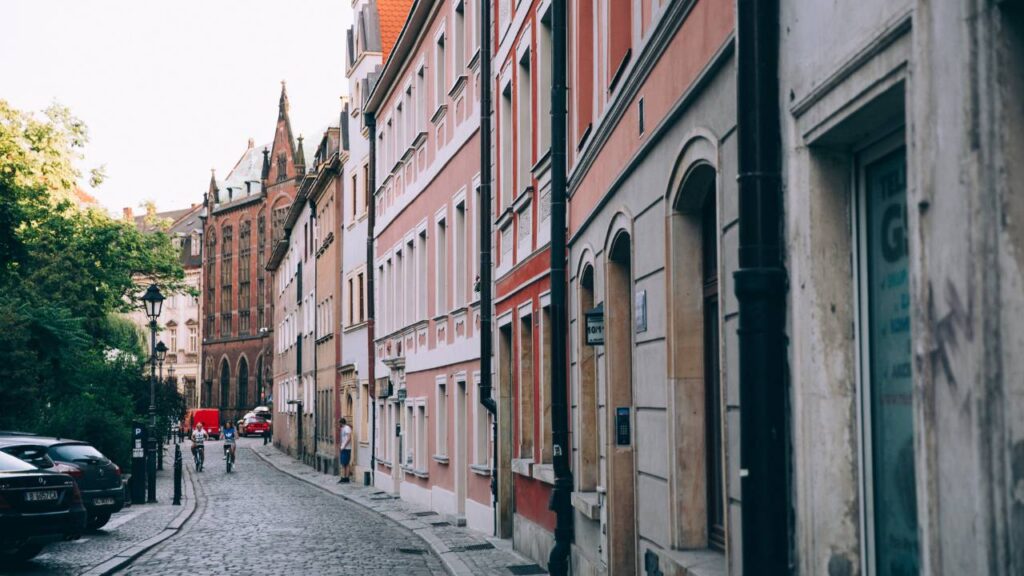
Things to Do
- Visit the Grand Ducal Palace: Take a tour of the Grand Ducal Palace, the official residence of the Grand Duke of Luxembourg, and watch the changing of the guard during the summer months.
- Experience Notre-Dame Cathedral: Step inside the stunning Notre-Dame Cathedral, a masterpiece of Gothic architecture and a key religious site in Luxembourg.
- Shop in Elegant Boutiques: Oberstadt is home to a variety of high-end boutiques and charming shops. Spend some time browsing for local souvenirs or designer fashion.
- Relax in Place Guillaume II: This central square is the heart of the district and hosts regular markets, events, and performances. It’s a great spot for people-watching or enjoying a coffee in one of the cafés.
7. Philharmonie Luxembourg
The Philharmonie Luxembourg is a world-class concert hall and a highlight of the city’s cultural landscape. Designed by architect Christian de Portzamparc, the building is a striking piece of modern architecture, with its white columns and sleek design. The venue hosts over 800 performances each year, ranging from classical music and jazz to contemporary and world music. Whether you’re a fan of symphonies or live music performances, the Philharmonie offers an unforgettable auditory and visual experience
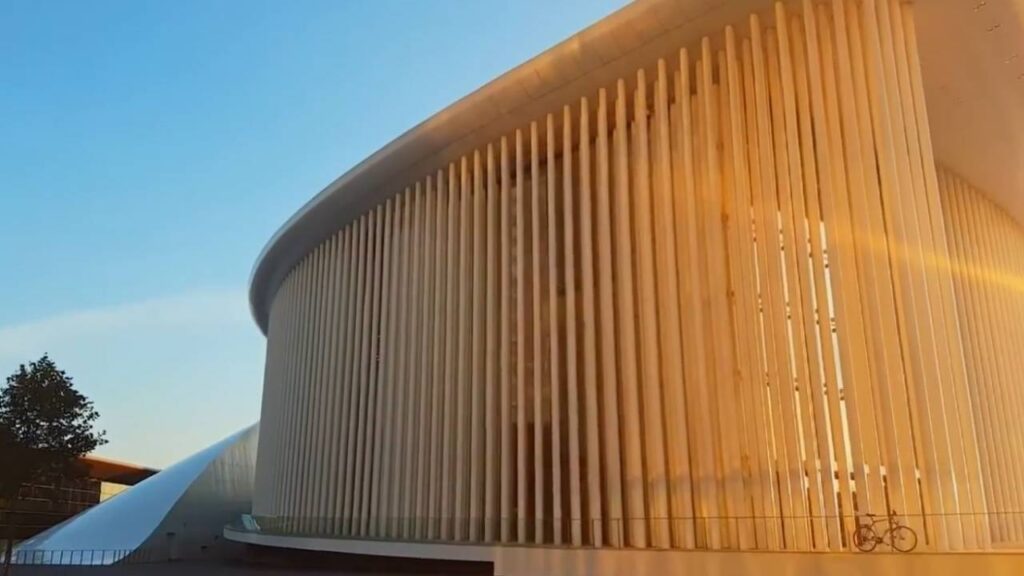
Things to Do
- Attend a Concert: Check the schedule and attend a live performance at the Philharmonie. With a wide range of musical genres to choose from, there’s something for everyone.
- Take a Guided Tour: If you can’t catch a performance, consider taking a guided tour of the Philharmonie to learn about its history, architecture, and the acoustics behind its design.
- Relax in the Auditorium: Even if you’re not attending a concert, the Philharmonie’s elegant spaces are perfect for a moment of quiet reflection.
8. Panoramic Elevator of the Pfaffenthal
Panoramic Elevator in the Pfaffenthal district is an innovative and unique way to travel between the lower and upper parts of Luxembourg City. At 63 meters high, this glass-walled elevator offers breathtaking views of the cliffs, the city’s rooftops, and the Alzette River. The elevator is free to use, making it an accessible and must-do experience for visitors seeking a bird’s-eye view of the city.
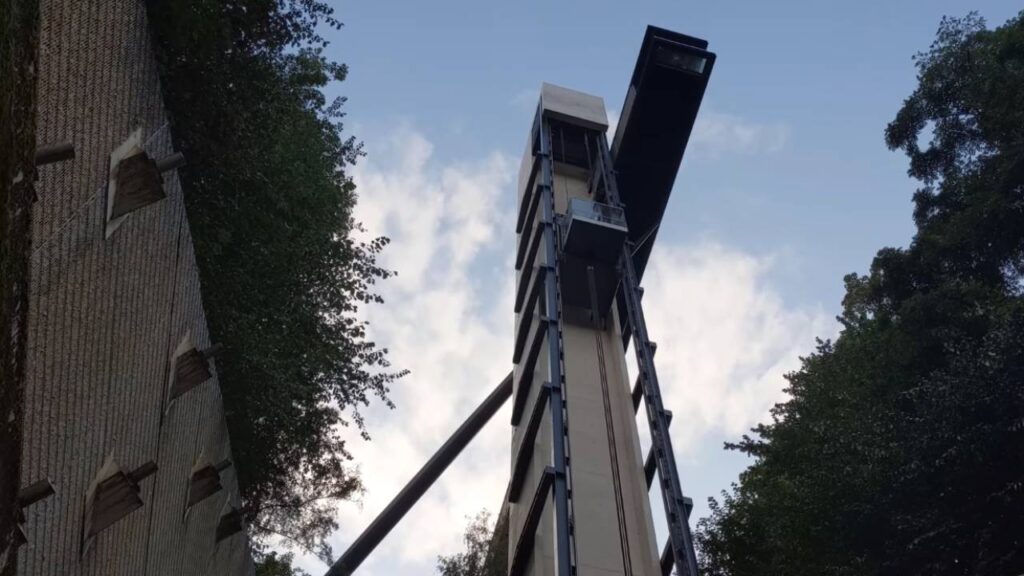
Things to Do
- Ride the Elevator: Hop on the elevator for an unforgettable vertical ride with stunning panoramic views of the city, the cliffs, and the river.
- Take Photos: The elevator ride is an excellent opportunity to capture unique aerial views of Luxembourg City. Don’t forget your camera!
- Enjoy the Surrounding Area: After taking the elevator, surrounding Pfaffenthal area, which offers walking paths and charming viewpoints.
9. The Casemates du Bock & Petrusse
Luxembourg’s Casemates du Bock are a fascinating network of underground tunnels and fortifications that have been carved into the rocks for centuries. The Bock Casemates, one of the city’s most famous historical sites, offer a glimpse into the military history of Luxembourg. During times of war, these tunnels served as shelters for soldiers and horses. Today, they are open to the public, providing a unique experience for history enthusiasts and adventurous.
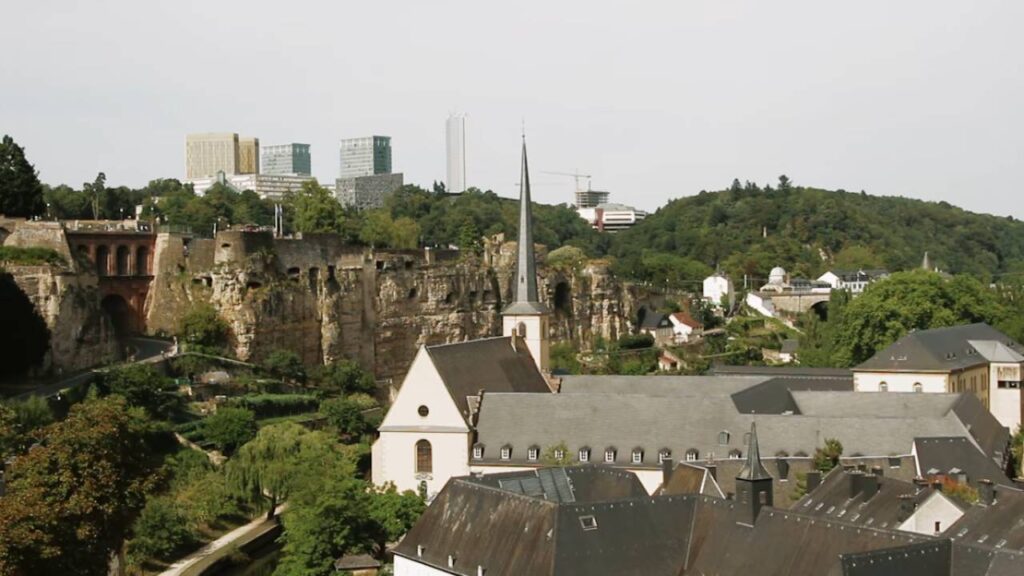
Things to Do
- Visit the Tunnels: Wander through the narrow, dimly lit tunnels of the Bock Casemates and learn about their military use and strategic importance.
- Visit the Casemates Museum: Small museum at the entrance of the Bock Casemates to learn about the history of the tunnels and the city’s fortifications.
- Experience the Petrusse Casemates: When open, the Petrusse Casemates offer another underground experience, giving a further insight into Luxembourg’s military past.
10. Foodie & Cocktail Hotspots
Luxembourg City has a thriving culinary scene, offering a blend of traditional Luxembourgish fare and modern international cuisine. The city’s diverse food offerings range from fine dining to casual cafés, all serving up delicious meals made from fresh, local ingredients. Whether you’re in the mood for gourmet dishes, trendy fusion cuisine, or creative cocktails, Luxembourg’s foodie scene won’t disappoint.

Things to Do
- Indulge in Luxembourgish Cuisine: Try classic dishes like Judd mat Gaardebounen (smoked pork with broad beans) and Quetschentaart (plum tart) at one of the city’s renowned restaurants.
- Visit Cocktail Bars: Experience Luxembourg’s vibrant nightlife by visiting trendy cocktail bars like Octans and Bar Konrad for bespoke cocktails and unique drinks.
- Visit the Food Markets: Visit the local food markets to sample regional specialties, artisan products, and fresh produce. The markets offer a perfect way to experience Luxembourg’s culinary culture.
11. Luxembourg Sightseeing Tours
To make the most of your time in Luxembourg City, consider taking part in a guided sightseeing tour. Whether you prefer a walking tour, bike tour, or hop-on-hop-off bus tour, there are numerous options available to visit the city’s rich history, culture, and landmarks. These tours provide insights into Luxembourg’s history and architecture, and they are a great way to see the city at a relaxed pace.

Things to Do
- Join a Walking Tour: Take a guided walking tour of Luxembourg’s Old Town to learn about its history, hidden gems, and landmarks.
- Hop-on-Hop-off Bus: Use the hop-on-hop-off bus service to the main attractions at your own pace, stopping at sites like the Grand Ducal Palace, the Bock Casemates, and more.
- Try a Bike Tour: Rent a bike and join a guided bike tour that takes you along scenic riverside paths, through forests, and past historical monuments.
Santorini, Greece: Best Things To Do & Complete Travel Guide
11 Authentic Hotspots highlighted above are just the beginning of what this charming city has to offer. Each location provides a unique insight into Luxembourg’s rich history, making it an unforgettable destination for anyone interested in European culture, history, and architecture.
FAQs
1. Where is Luxembourg located?
Luxembourg is a small, landlocked country in Western Europe, bordered by Belgium to the west and north, Germany to the east, and France to the south. Its central location makes it an important hub for European politics, finance, and transportation. Despite its small size, Luxembourg is a founding member of the European Union and hosts several key EU institutions.
2. Is Luxembourg a country or a city?
Luxembourg is both a country and a city. The country is officially called the Grand Duchy of Luxembourg, and its capital is Luxembourg City. While Luxembourg City is the political, cultural, and financial heart of the country, the country itself is divided into 12 cantons, and it includes beautiful towns, forests, and valleys beyond the capital.
3. What languages are spoken in Luxembourg?
Luxembourg is trilingual. The three official languages are:
- Luxembourgish (national language, spoken in daily life),
- French (used in legal and administrative matters),
- German (common in media and schools).
Most residents are fluent in all three, and English is widely spoken, especially in business and tourism.
4. Is Luxembourg expensive to visit?
Yes, Luxembourg is considered one of the more expensive destinations in Europe, especially when it comes to accommodation, dining, and transportation. Country offers high-quality services, and many museums and attractions in Luxembourg City are free or low-cost, particularly on certain days or with the Luxembourg Card.
5. Do I need a visa to visit Luxembourg?
Luxembourg is part of the Schengen Area, so visitors from other Schengen countries do not need a visa.
- U.S., Canadian, UK, Australian, and many other passport holders can enter for up to 90 days without a visa for tourism or business.
- Visitors from other countries may need a Schengen Visa, depending on nationality. It’s always best to check entry requirements with your local Luxembourg embassy or consulate before traveling.
6. What is Luxembourg famous for?
Luxembourg is renowned for several things:
- Its UNESCO-listed Old Town and Bock Casemates,
- Being one of the wealthiest countries per capita in the world,
- A thriving financial center,
- Historic castles, especially Vianden Castle,
- Political neutrality and being home to European Court of Justice and other EU institutions.
It is also admired for its multilingual society, lush green landscapes, and high quality of life.
7. Is Luxembourg safe for tourists?
Yes, Luxembourg is considered one of the safest countries in the world. Crime rates are very low, and the police presence is strong and effective. Tourists can visit day or night with confidence. Like any popular destination, it’s still wise to keep an eye on personal belongings in crowded areas.
8. What is the best time to visit Luxembourg?
Best time to visit Luxembourg is from May to September, when the weather is mild and ideal for sightseeing, festivals, and outdoor activities.
- Spring and early summer (May–June) are particularly lovely, with blooming flowers and fewer tourists.
- Autumn (September–October) is great for wine tasting in the Moselle Valley.
- Winter offers Christmas markets and a cozy atmosphere, though some rural attractions may be closed.
9. How do I get around Luxembourg?
Luxembourg is the first country in the world to offer free nationwide public transport for everyone—residents and tourists alike.
- You can travel for free by train, bus, and tram across the country.
- Luxembourg City has a reliable tram network, and taxis are also available.
- If exploring the countryside or castles, renting a car is a good option, though public transport is efficient and well-connected.
10. What currency is used in Luxembourg?
Luxembourg uses the Euro (€) as its official currency.
- Credit and debit cards are widely accepted.
- ATMs are available throughout the country.
- It’s a good idea to carry some cash for small shops, cafes, or when visiting more rural areas.


